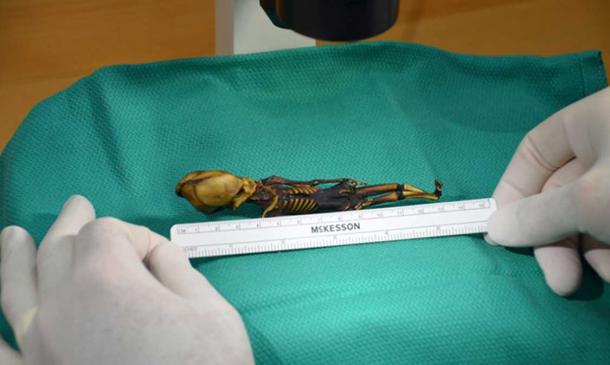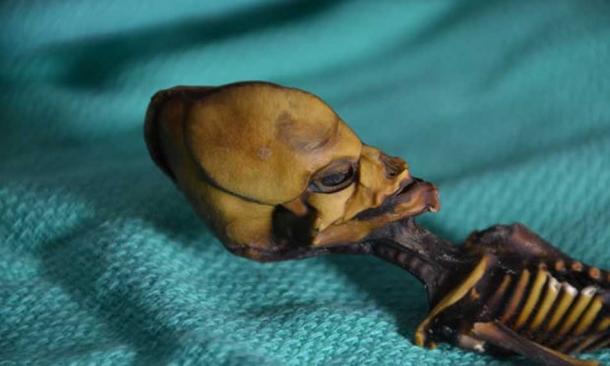No, It’s Not an Alien — Here’s What That Tiny, Pointy-Headed Skeleton Really Is

No, It’s Not an Alien — Here’s What That Tiny, Pointy-Headed Skeleton Really Is
As evidence of aliens on earth, a tiny skeleton with a conical skull made international headlines. But scientists say the genes are terrestrial – many are even shared with Chileans of the modern age. They are now ready to tell you Ata tragic story, who they say is a baby girl who became an international sensation as a supposed alien skeleton.
Ata is the name given to a 6-inch (15-cm) long skeleton found in La Noria, a ghost town in Chile’s Atacama Desert, in 2003. Stories say that her remains have been wrapped in a white cloth tied with a violet ribbon or lovingly put inside a leather bag.

The speculation on what caused her tiny statue missing ribs (10 pairs instead of 12), elongated skulls, and hard bones, abounded from the moment Ata became exposed to the press. Appearing amid reports of premature birth or a miscarried fetus did not take long for the extraterrestrial idea “Hoax” screams! “They’ve heard too.
But BBC reports the person currently in possession of the remains of Ata, a Spanish businessman named Ramón Navia-Osorio who bought her mummy in 2012, decided it would be worth exploring the story behind the little creature further.
He gave permission to do some x-ray and CT scans on the skeleton to Dr Steven Greer, founder of The Disclosure Project (to reveal data on “UFOs, extraterrestrial intelligence and classified projects on advanced energy”). Greer took things a step further and provided samples of Ata’s bone marrow to the microbiologist and immunologist Garry Nolan.
The Stanford University scientist declared Ata’s genes as a human in 2013. However, Nolan didn’t have an explanation for her unusual physical features and that is the main reason several scientists were not satisfied with this final conclusion – they argued that there was a need to further explore the unexplained characteristics of the hominid.

The Guardian reports that Nolan and his colleagues are now ready to share their reasoning for Ata’s strange features with the world. The one-word answer? Mutations. As the researchers wrote in their paper published in Genome Research :
“Ata is a female of human origin, likely of Chilean descent, and its genome harbors mutations in genes […] previously linked with diseases of small stature, rib anomalies, cranial malformations, premature joint fusion, and osteochondrodysplasia (also known as skeletal dysplasia).”
Ata is said to have mutations in at least seven genes which cause skeletal malformations or accelerate growth. Combined, the scientists believe that the mutations can explain away all of Ata’s unusual physical characteristics – from her size to the advanced age of her bones, they say this even explains her skull shape. Nolan also asserts that Ata is a human fetus which was stillborn or died following her birth.
However, not everyone is convinced. Fowzan Alkuraya, geneticist at the King Faisal Specialist Hospital and Research Center in Riyadh, Saudi Arabia, told National Geographic that it’s “virtually unheard of” for a person to have that many mutations; he believes that only one or two mutations should be able to explain the physical abnormalities. Nolan disagrees, saying “That poor child unfortunately rolled the dice seven times snake eyes.”
For his part, Greer responded to the current research by saying, “We don’t know what it is, but it most certainly is not a deformed human.”

The debate will most likely continue, however upsetting it may be to Nolan, who wishes that people will finally let go of the ‘alien story’ related to Ata. He told The Guardian,
“While this started as a story about aliens, and went international, it’s really a story of a human tragedy. A woman had a malformed baby, it was preserved in a manner and then ‘hocked’ or sold as a strange artefact. It turns out to be human, with a fascinating genetic story from which we might learn something important to help others. May she rest in peace.”